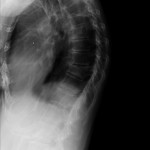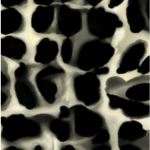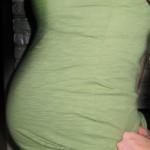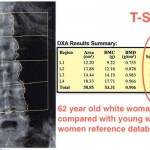Fracture risk assessment has been a part of overall evaluation of osteoporosis. However, the challenge was trying to systematically measure one’s risk. A scientific committee of the World Health Organization undertook the task. They developed a tool based epidemiologic data from research studies across the world and tested for validity in thousands of other subjects.… Read more
Genes
Genes determine 60 to 80% of your adult bone mass. To reach your genetic potential peak bone mass you need to supply the essentials – calcium, vitamin D, nutrition, exercise – along with various hormones for support of growth and development of bone. The interaction of environmental factors can influence your genes. Family history of… Read more
Glucocorticoid-induced Osteoporosis
Glucocorticoid-induced osteoporosis or “GIOP” for short is the leading cause of secondary osteoporosis – meaning something produces the disease osteoporosis. That is “glucocorticoids,” which are steroids. Natural glucocorticoids are hormones made in the outside portion of the adrenal gland that sits on top of your kidneys. Cortisol is the major natural glucocorticoid. Medicines classified as… Read more
Hyperparathryoidism
The job of the parathyroid is to regulate calcium. The parathyroid consists of 4 glands that are located behind the thyroid gland in your neck. The parathyroid produces parathyroid hormone abbreviated as PTH. Hyperparathryoidism is the production of too much parathyroid hormone. The most common cause is enlargement of one of the four parathyroid glands… Read more
Ibandronate
Ibandronate is the generic version of Boniva, which is a prescription medicine option for treatment of osteoporosis in the class of medicines called bisphosphonates. After the patent for Boniva expired in 2012, generic ibandronate in tablet form, 150 milligrams once monthly, became available. The data for effectiveness, safety, and side effects is based on clinical… Read more
Jaw bone Problem
Jaw bone problem refers specifically to a condition called osteonecrosis of the jaw or ONJ. This problem may occur in a variety of situations. In the bone health setting, the reference is to a complication of potent osteoporosis medicines in the bisphosphonate class or Prolia (denosumab). Look for more information under osteonecrosis of the jaw.

Kyphosis
Kyphosis is commonly referred to as dowager’s hump. It is the deformity in the upper back that causes one to be bent forward. Although multiple problems may manifest as kyphosis, osteoporosis is the one most identified with this condition. In osteoporosis, the cause is fractures in the upper or thoracic spine. The fractures are typically… Read more
Low bone mass
Low bone mass is the preferred term for “osteopenia.” Osteopenia is not a disease but indicates low bone density. Low bone mass defined by bone mineral density is a T-score between -1.0 and -2.5 standard deviations. By the age of 50, there is a high prevalence of low bone mass using the T-score between -1.0… Read more
Male Osteoporosis
Although men are at lower risk for osteoporosis than women, men are not immune. In fact, men sustain nearly 30% of the 2 million fractures that happen in adults over the age of 50 each year in the US. Also, men are more likely than women to die after having a hip fracture. One in… Read more
N-Telopeptide
Your doctor may order a test for measurement of N-telopeptide (NTx). It is a bone turnover marker that can measured from a urine or blood sample. N-telopeptide is a breakdown product of collagen. Therefore, NTx is an indirect measure of the rate of bone breakdown. The average level measured in the urine for premenopausal women… Read more
National Osteoporosis Foundation (NOF) Treatment Guidelines
The National Osteoporosis Foundation (NOF) sets guidelines for treatment of osteoporosis in the United States based on expert consensus. The latest guidelines were published in 2008. These are released in conjunction with the World Health Organization release of new osteoporosis assessment report and fracture risk assessment tool. Treatment guidelines were established based on fracture risk… Read more
Osteoblasts
Osteoblasts are the bone-building cells. Osteoblasts secrete collagen that is mineralized to form new bone tissue. They lay down bone in an orderly manner after the osteoclasts dissolve old bone creating pits or holes on the surface of the bone. Osteoblasts take 3 months to fill in the pits that osteoclasts took about 2 weeks… Read more
Osteoclasts
Osteoclasts are the bone breakdown cells. Osteoclasts dissolve the mineral in old bone and create pits or holes in the surface of the bone. This is called bone resorption. The bone building cells, osteoblasts, then line up and fill in the pits. The process of bone breakdown and formation called bone turnover replaces the tissue… Read more
Osteomalacia
Low bone density can be due to osteomalacia. Osteomalacia is “soft bones” meaning the amount of bone is normal but it is not mineralized. Therefore in osteomalacia, measurement of “bone mineral density” with a DXA scan will be low. This is due to lack of bone mineral rather than abnormal bone structure. This is in… Read more
Osteonecrosis of the Jaw (ONJ)
Osteonecrosis of the jaw, referred to as ONJ, is development of lesions of the jaw that do heal within 8 weeks. These lesions contain dead tissue of the jaw with overlying areas of swelling and drainage of pus visible in the mouth. Link with Osteoporosis Medicines Osteonecrosis of the jaw is an unusual side effect… Read more
Osteopenia
Osteopenia is not a disease but indicates low bone density, which is the preferred descriptive term. Low bone mass defined by bone mineral density is a T-score between -1.0 and -2.5 standard deviations. By the age of 50, there is a high prevalence of low bone mass using the T-score between -1.0 and -2.5 standard… Read more

Osteoporosis
Osteoporosis is a disorder of skeletal insufficiency that is typically a result of increased bone breakdown relative to bone formation. With aging and in women the transition to menopause, the rate of bone loss accelerates. Over time, the thinning of the bone creates a more fragile skeleton that is susceptible to fracture. Major Public Health… Read more
Peak bone mass
Peak bone mass is the highest amount of bone mass attained after skeletal growth. Bone mass increases throughout childhood and early adulthood to reach a peak in the late 20s to early 30s. Peak bone mass is a major determinant of later risk for osteoporosis and fractures. The bone mass in later life depends upon… Read more

Pregnancy
Pregnancy is a time of increased calcium demands. However, you don’t need to increase your calcium intake beyond the recommended daily amounts for your age. Intestinal absorption increases to compensate for the higher demand. Nevertheless, you still need to pay attention to your daily calcium content in your diet. If you are unable to reach… Read more
Prolia
Prolia® (denosumab) is a treatment for osteoporosis that was first approved by the FDA in 2010 for use in women with osteoporosis who are high risk for fracture. How Prolia Works Prolia decreases bone turnover by a different mechanism of action than the other FDA-approved medicines for osteoporosis. The discovery of a signaling pathway for… Read more
Proton Pump Inhibitors
Proton pump inhibitors, also known as PPIs, are linked to risk of osteoporosis. Proton pump inhibitors are available both by prescription and in over-the-counter preparations. Common brand names include Nexium®, Prevacid®, Prilosec®, Protonix®, and Zegerid®. Bone Link The exact mechanism is not known but may be due to decreased stomach acid that is necessary for… Read more
Quadriceps strength
Quadriceps strength is a risk factor for falls and fractures. The quadriceps are the muscles in the front of your thigh. They are important for your core strength, getting up and down, and walking. With aging, loss of muscle mass called sarcopenia predisposes you to weaker quadriceps muscle strength and falls. A measure of quadriceps… Read more
Raloxifene
Raloxifene is the generic name for an osteoporosis medicine with the brand name Evista®, a product of Eli Lilly and Company. No generic version of Evista is available. The patent for Evista is valid until March of 2014; however, other circumstances, such as lawsuits, could delay this. Refer to Evista entry for information about this… Read more
Reclast
Reclast® is a prescription medicine option for treatment of osteoporosis manufactured by Novartis. Reclast is in the class of medicines called bisphosphonates that also includes Actonel, generic alendronate, Atelvia, Boniva, Fosamax, and generic ibandronate. Reclast works by decreasing the rate that bone is broken down. This reduction in bone turnover results in stabilizing or building… Read more
Remodeling
Bone is constantly changing. Old bone breaks down and new bone is formed in a continuous process called remodeling. The bone breakdown cells, osteoclasts are linked with the bone forming cells, osteoblasts in a cycle of bone breakdown and formation. Remodeling occurs in sequence initiated by microdamage to start the repair process. In remodeling, bone… Read more
Risedronate
Risedronate is the generic name for an osteoporosis medicine with brand names Actonel® and Atelvia®, products of Warner Chilcott. No generic versions of Actonel or Atelvia are available since the patents are still in effect. Actonel is slated to go off patent in 2013; however, other circumstances, such as lawsuits, could delay this. Refer to… Read more
Risk factors
The list of risk factors for osteoporosis and fractures is long and extensive. Some you can modify others like your age you can’t. Rather than listing innumerable risk factors, the most common are included below. What You Can’t Change Older age Being a woman Family history of fractures or osteoporosis Race – White or Asian… Read more
Soy
Soy foods are derived from soybeans. You may see soybeans also referred to edamame, which is the Japanese name for the young, green variety. Soy foods are common protein substitutes for meat or fish. Soy contains proteins that are high in isoflavones named genistein and daidzein. These are phytoestrogens, which are plant compounds that mimic… Read more
Spinach
Spinach is often touted as a good source of calcium. Unfortunately, the calcium in spinach is not available for absorption because of a plant substance called oxalates. The oxalates bind the calcium in spinach so calcium is not absorbable. This holds true for raw or cooked spinach. That’s the bad news. Nevertheless spinach is a… Read more
Steroids
Steroids are the leading cause of secondary osteoporosis – meaning something produces the disease osteoporosis. The term steroids used here refers to “glucocorticoids.” Natural glucocorticoids are hormones made in the outside portion of the adrenal gland that sits on top of your kidneys. Cortisol is the major natural glucocorticoid. Medicines classified as glucocorticoid are equivalent… Read more

T-score
T-Score is a standardized number that you may see on your bone density scan results or reports. Your bone mineral density (BMD) at each skeletal site of measurement is compared to a reference database of younger individual at peak bone mass (average age 30) and same sex. This calculated score is used for diagnosis of… Read more
Teriparatide
Teriparatide is the generic name for an osteoporosis medicine with the brand name Forteo®, a product of Eli Lilly and Company. No generic version of Forteo is available since the patent for Forteo is still in effect until December 2018. Multiple companies are pursuing other routes of delivery of this medicine, which is currently available… Read more
